Rebecca Hawkins
B.S. Wildlife Conservation (Virginia Tech, 2021)
M.A. Museum Studies (University of Kansas, 2023)
I first became interested in animal skulls as a teenager when I found one in a potato chip bag in the woods. That sounds like the set up for a joke, but I swear it’s true! I took it to my biology teacher to find out what it was, but she only had guesses to offer. By comparing my skull to pictures on the internet I eventually found out it was from an opossum, but that experience led to my fascination in the differences between animals skulls and how to identify them.
In my eagerness to learn more I researched all sorts of skull identification resources. However, most are too full of scientific jargon for the everyday person to understand and are locked away in books or behind paywalls. I was fortunate that my academic background in biology allowed me to learn from these challenging resources, but not everyone can do the same. As such, I was inspired to make my own identification resource, one accessible and understandable to the general public so that others can learn as I had.
What’s This Skull? was created in 2023 for my master’s thesis project to fulfill that goal. I designed What’s This Skull? with the everyday person in mind. I want anyone that’s found a skull and that’s curious enough to seek out its identity to be able to use my website. Additionally, the biologist in me has spared no detail. Unlike most identification guides for the general public that stop at generic identifications like “rabbit” or “bat”, What’s This Skull? lets users identify skulls down to the species level based on their region. You may be surprised to learn that your rabbit skull is actually a desert cottontail!
Not only is What’s This Skull? built for the everyday person, it is also perfect for educators to teach students about skull characters, skull identification, and local mammal fauna. Students enjoy the challenge of identifying skulls. Researchers can also make use of What’s This Skull? to identify skulls for studies, such as owl pellet surveys.
What’s This Skull? was made possible thanks to natural history collections, whose specimens I examined and photographed to create this website. Support your local natural history museum, because without them projects like mine could not exist.
Want to reach out to me with feedback, questions, or identification requests? Email me at admin@whatsthisskull.com.

